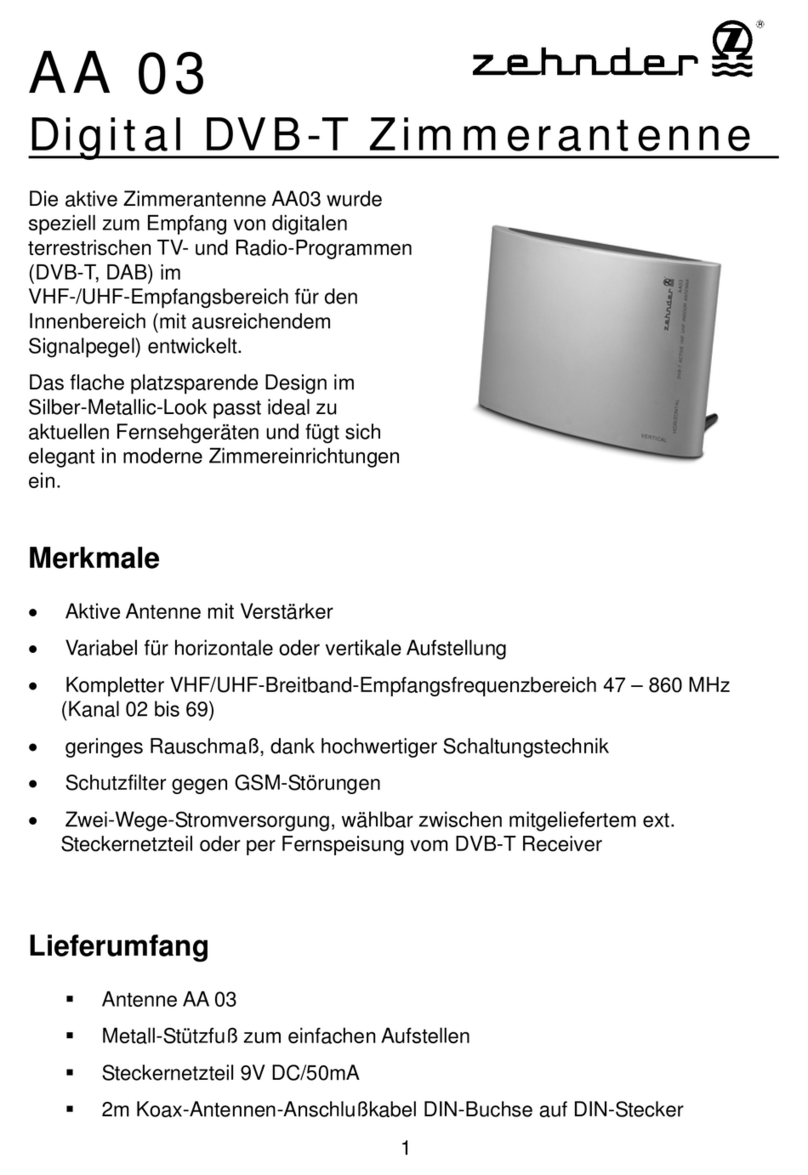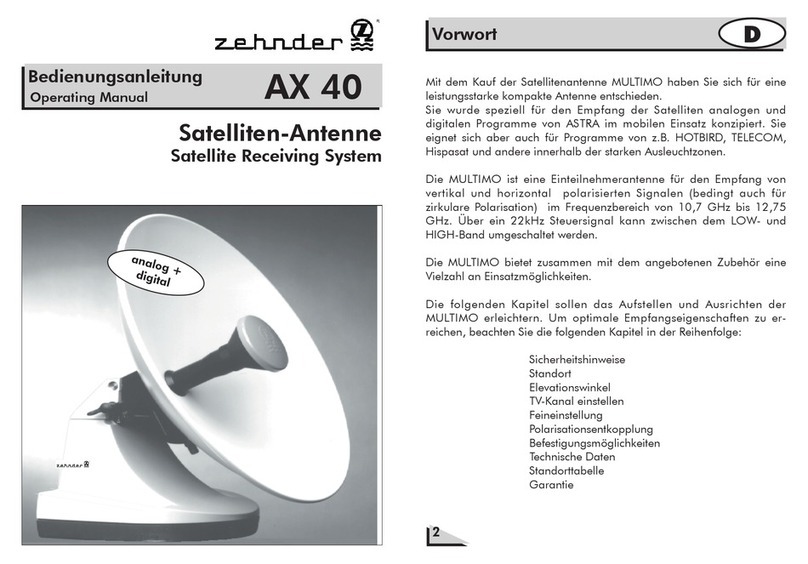
3
Betriebshinweise
In Gebieten mit geringen oder zu starken Empfangsfeldstärken ist ein
störungsfreier Empfang nicht in allen Fällen gewährleistet. Bei zu
schwachem Signalpegel sollte eine Richtantenne außerhalb des Gebäudes
verwendet werden.
In unmittelbarer Nähe zum Sender kann der Empfang durch zu hohe
Empfangspegel beeinträchtigt werden. Dann sollte eine fensternahe
Aufstellung vermieden werden.
Der Rundfunkempfang in Innenräumen kann zudem durch weitere Faktoren
beeinträchtigt werden:
- Räume in Stahlbetonbauten
- Räume mit metallbedampften Fenstern
- in unmittelbarer Nähe von sendenden elektr. Geräten (z.B. Mobiltelefonen)
Inbetriebnahme (siehe Anschlussskizze nebenan)
Schritt 1: Verbinden Sie die Antenne über das mitgelieferte Antennenkabel mit
dem DVB-T Receiver.
Achtung! Nicht an einen Sat-Receiver anschließen!
Schritt 2: Verbinden Sie das mitgelieferte Steckernetzteil mit der Antennenbuchse
auf der Geräterückseite und stecken Sie es anschließend in die 230V
Wandsteckdose.
Hinweis: Wenn Ihr DVB-T Receiver über eine
5-Volt-Fernspeisemöglichkeit über den Antenneneingang verfügt
(z.B. Zehnder DVB-T-Box), dann benötigen Sie Schritt 3 und somit
das Steckernetzteil nicht
Schritt 3: Stecken Sie den Stützfuß in das auf der Geräterückseite vorgesehene
Loch. Je nach Aufstellungsposition (vertikal oder horizontal) sollte zuvor
die Einsteckvorrichtung am Gehäuse gedreht werden.
Schritt 4: Verbinden Sie den Receiver mit dem TV-Gerät (siehe
Receiver-Handbuch) und schalten Sie beide Geräte ein.
Hinweis: Bei Verwendung des Receivers mit 5V-Fernspeisung
(siehe unter 3.) müssen Sie über das Einstellmenü des Receivers
sicherstellen, dass die 5V Stromversorgung der Antenne über das
Antennenkabel eingeschaltet ist (siehe Receiver-Handbuch).































